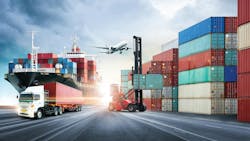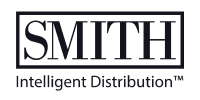Under Pressure, But Still Moving: APAC Distributors Soldier On
Download this article in PDF format.
Like many other industry sectors right now APAC’s electronic component distribution landscape is navigating an environment where supply uncertainty, demand volatility and trade disruption have become the norm. According to the 2025 Top APAC Distributors report, top distributors in the region are also managing allocation issues and long lead times even as some global supply chains show signs of recovery.
Consolidation among suppliers is tightening sourcing options while at the same time customer expectations for speed and availability continue to escalate. Of course, tariffs remain a key wild card in this environment, where policy decisions and agreements seem to fluctuate daily. For example, while Vietnam was once seen as a safe hedge, it’s now facing tariffs of up to 46%. At the other end of the scale, India and Singapore may emerge as relative winners thanks to steady/lower rates and ongoing trade negotiations.
From Headwinds to Opportunity
Based on responses from leading APAC electronic component distributors, the 2025 Top APAC Distributors report uncovered the core challenges currently shaping the business landscape and putting increased pressure on profitability, planning and resilience. Allocation issues and long lead times for components continue to top the list.
And while some global supply chain disruptions are easing, APAC distributors report continuing delays in sourcing critical parts. These constraints are compounded by the ongoing consolidation of suppliers, which is narrowing sourcing options and impacting buyer leverage in numerous product categories.
This year, nearly all survey respondents cited “margin erosion” and “demand changes/forecasting” as their most pressing concerns. As prices remain volatile and customer expectations rise, distributors are working to balance profitability with accurate demand predictions. The tariff situation is only adding fuel to the fire by straining cross-border operations and increasing landed costs.
Other challenges cited by survey respondents include the growing influx of counterfeit parts, the rise of low-cost “internet distributors” and pressure to address sustainability and security requirements. These issues represent both operational and reputational risks, as companies work to maintain customer trust, ensure product integrity and adapt to emerging regulatory and environmental expectations. Collectively, these challenges underscore the need for greater agility, transparency and long-term strategy in the APAC distribution landscape.
Supply Strains and Demand Swings
On a broader level, the APAC region’s economic and trade backdrop isn’t doing much to ease distributors’ concerns as they move into the second half of the year. For example, The Guardian reports that manufacturing activity in China—the region’s largest exporter—contracted for the third straight month in June 2025.
This could be a signal that ongoing trade disruptions and tariff uncertainty are weighing on industrial output. China’s Purchasing Managers’ Index (PMI) fell below the critical 50-point mark, the publication reports, reflecting contraction for the first time since 2023. “Anything below the 50-point mark signifies a contraction,” The Guardian says.
At the same time, stock markets across the APAC region are reacting in real-time to all of the uncertainty that’s swirling around right now. While Japan’s Nikkei and South Korea’s KOSPI posted modest gains in late June, India’s Sensex and Nifty both declined as investor sentiment shifted with each new data release and policy signal, CNBC reports. In China, the CSI 300 index ticked up slightly, but only after steep losses in April tied to heightened trade tensions and manufacturing slowdown.
New Rules, New Routes
Looking ahead to the rest of the year, ING THINK says that while the latest round of U.S. tariffs put renewed pressure on many Asian economies, some countries are well-positioned to turn that disruption into opportunity. For example, India, Singapore and the Philippines were left off the most recent tariff list, it says, and are now “actively pursuing or finalizing trade deals” with the U.S., a move that could give them a competitive edge in the months ahead.
“Singapore, in particular, stands to benefit significantly if the 10% rate is maintained,” ING points out. “As one of the most trade-dependent economies in the region, preserving low-tariff access to the U.S. market is critical. Additionally, the U.S. currently runs a trade surplus with Singapore, and Singapore has the lowest reliance on Chinese imports among its regional peers. These factors enhance the likelihood of Singapore securing a concessionary or preferential tariff arrangement going forward.”
About the Author
Avery Larkin
Contributing Editor
Avery Larkin is a freelance writer that covers trends in logistics, transportation and supply chain strategy. With a keen eye on emerging technologies and operational efficiencies, Larkin delivers practical insights for supply chain professionals navigating today’s evolving landscape.






